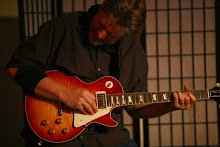glennmcintosh 9/15/2004 11:57 AM
Greetings Don, Great book! The best in my ever-growing collection on soloing techniques. I'd like to get some background on the target melodies you've sighted in the books. In particular, why these two? Are there just two? Are there some popular three and five note variations, etc? Are these two target melodies just as endemic to Jazz as the 12-bar form is to blues? Will you be publishing some other sample lines created from the target melodies? Thanks
cjazz 9/21/2004 7:26 PM
Of course there are other melodies. In fact I did write a book called :" An approach to chromatic playing" In this book I demonstrate the hole picture and theory about approaches to certain chord or scale tones. Start from one note approach up to four and five notes to chromatic playing. After that you have so many choices and so many little melodies to create your own.Any one you wants information about my book, can reach me at:cjazz@hol.gr
Don Mock 11/10/2004 8:06 PM
Thanks for the post Glenn and sorry it took me so long to reply. The target melodies are two of hundreds of possibilities but they both (being three notes that setup or target a chord or scale tone) work best for basic jazz phrasing. These two simple melodies demonstrate the fundamentals of chromatic playing. The are longer versions but to me they often end up being combinations or variations of the original two. If you really want to immerse yourself in chromatics in a million possibilities, find a copy of "Thesaurus of Scales and Patterns" by Nickolas Slominski. It is one amazing piece of work. I learned a lot of intervallic and chromatic ideas from this book, but it is deep! Hope this helps, and don't hesitate to send along any questions or comments. -Don Mock
bluesyourdaddy 2/24/2005 7:57 PM
Don,Got the book an think it is great. Any reason behind why Melody #2 targets the Maj3 and Maj7 and melody #1 targets all others? Just a little theory on that would be great.Thanks,Brian
Don Mock 2/24/2005 11:19 PM
Brian, the reason the two melodies target different chord tones is because of their first note. The melodies make more sense if the first note is in the "key" that the chord or scale tone is in. So in melody #2, the first note is 1/2 step above the target or chord tone which is almost always in the key. I think (hope) there is a pretty clear definition about this in the book and on the CD. Thanks, -Don Mock
Subscribe to:
Post Comments (Atom)

No comments:
Post a Comment